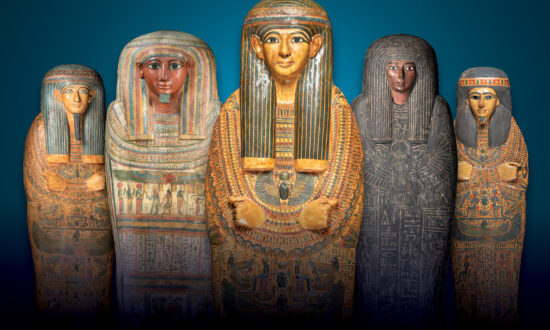Silhouettes: Fashion in the Shadow of HIV/AIDS
The David Roche Foundation House Museum
Silhouettes: Fashion in the Shadow of HIV/AIDS is an important exhibition because not only does it shine a light on the ongoing HIV/AIDS epidemic, which has faded from the public view, it also celebrates the lives and works of some of fashion’s brightest stars from the late 20th century.
Featuring designers, artists and activists who died of AIDS or AIDS-related illnesses, the exhibition is timely as we live through the COVID pandemic and remember the victims of an earlier one.
While some of the designers featured are well known – for example, Franco Moschino and Roy Halston – others have been forgotten, such as Clovis Ruffin and Chester Weinberg. Exhibition curator Skye Bartlett wanted to unearth the histories of these designers, many of whom were cut off at the height of their careers.
“It was a case of reinvestigating and rediscovering these lost lives,” Bartlett says.
“I wanted to do it through fashion because fashion is very understandable and you can relate to fashion. While we have very little information about some of these people, we have the clothes, and you can understand a lot about someone through their style.”
Silhouettes is a joyful, vibrant and colourful array of fashion objects, sourced from private and public collections from the UK, US and Australia. It’s fitting that the first designer you encounter when walking into the exhibition is Weinberg. He was the first high-profile fashion designer known to die of an AIDS-related illness and it was also where Bartlett began his project with Weinberg’s pink silk Evening Dress, 1968, the first piece he acquired.

Chester Weinberg’s Cocktail Dress, spring/summer 1968 (silk), and his Evening Dress, 1968 (silk, satin), both on loan from a private collection in Adelaide.
Even though Weinberg helped put American fashion on the map, with his distinctive silhouettes becoming some of the defining shapes and styles of the 1960s and 1970s, very little information is available about him.
Halston is one of the more well-known designers and very of-the-moment, thanks to a recent Netflix series focused on him, with Halston played by actor Ewan McGregor. The exhibition showcases Halston’s minimalist and timeless designs, including a suit made of Ultrasuede and the stunning Fireworks Dress from 1981. Also featured is a photograph of Halston by Andy Warhol, on loan from the Art Gallery of South Australia; this is the first time it has been exhibited since its purchase last year.

Roy Halston’s Fireworks Evening Dress, 1981 (chiffon, satin, beads), collection of Morphew Vintage, New York, and Evening Dress c1970 (synthetic jersey), on loan from a private collection in Adelaide.
While the ’70s and ’80s was the height of the HIV/AIDS epidemic, it was also a vibrant time in terms of creativity, expression and experimentation. Bartlett manages to encapsulate this sentiment, with Silhouettes revealing some of the stories behind the designers.
One of the stories is that of designer Fabrice Simon, who was famous for his hand-beaded creations which often incorporated voodoo motifs. Celebrities clamoured to wear his designs, and he grew such a reputation that if an actor wore a Fabrice to an awards ceremony they were expected to win. Shirley MacLaine wore one when she won the best actress Oscar for Terms of Endearment and Whitney Houston wore one when she won a Grammy for the hit song “I Wanna Dance with Somebody”.
Only two of the fashion houses featured in Silhouettes still exist today: Perry Ellis, which is one of the biggest sports brands in the world, and Moschino. Franco Moschino was known for his playful style, often poking fun at the industry, as evidenced by the Chanel Parody Dress which is on display.

Franco Moschino’s Chanel Parody Dress 1992 (wool, cotton, silk, metal), on loan from a private collection in Adelaide.
Moschino was also a dedicated activist championing causes such as environmentalism, AIDS research and animal rights through his clothing and creative ad campaigns. Following his death in 1994, the fashion house continued his legacy, as seen with the inclusion of the Red Ribbon blazer, 1995, designed by Rossella Jardini for Moschino.

Rossella Jardini for Moschino, Red Ribbon blazer, 1995 (satin, silk faille, plastic), on loan from a private collection in Paris.
Silhouettes includes many more designers for audiences to explore as it charts the different fashions throughout the decades. Also featured is a wall of T-Shirts sourced from the collection of the Australian Queer Archives. The T-shirts range from the early days of the epidemic, in the 1980s, up to the more recent MAC Cosmetics “Everyday is World AIDS Day” campaign. The selection of T-shirts shows the different focuses in the community over time, from encouraging safe sex to directly appealing to the government about the approval of medications.
Included in the exhibition is a list of fashion industry professionals who have died of AIDS-related illnesses as a form of remembrance. While Silhouettes is a poignant reminder of the ongoing HIV/AIDS epidemic, it also celebrates the glitz and glamour of fashion and pays tribute to these talented individuals.
Silhouettes: Fashion in the Shadow of HIV/AIDS, at The David Roche Foundation House Museum in North Adelaide until June 18, is presented in partnership with South Australia Mobilisation + Empowerment for Sexual Health (SAMESH) and Thorne Harbour Health.
Support local arts journalism
Your support will help us continue the important work of InReview in publishing free professional journalism that celebrates, interrogates and amplifies arts and culture in South Australia.
Donate Here




